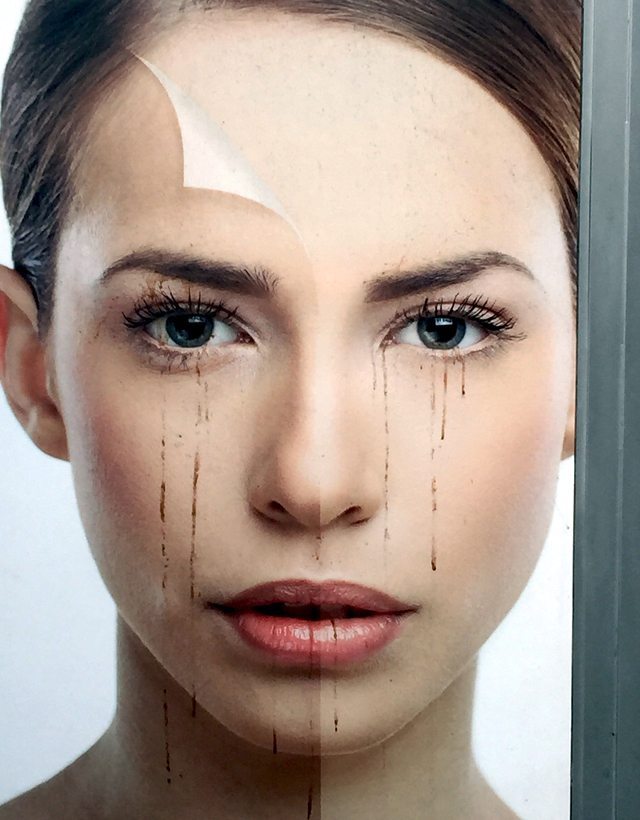Helping Patients See the World in a New Light
The Art of Seeing photography program inspires and encourages those coping with mental illness.
On a recent trip to the Whitney Museum of American Art, in New York City’s Meatpacking District, Dana spent an evening viewing the 20th-century paintings and sculpture spread over multiple floors and outdoor terraces. But amid the works of some of America’s most innovative artists, Dana was suddenly captivated by another visitor, a man with an image of Vermeer’s “Girl With a Pearl Earring” on his tote bag. She took out her iPhone and snapped a shot of the visitor from behind, his bag in view, gazing at another piece of artwork.
A few weeks later, on a Thursday, at 2 p.m., Dana was at the Payne Whitney Clinic at NewYork-Presbyterian/Weill Cornell Medical Center, sitting in a dark room with about 15 other people for a weekly group called The Art of Seeing. During this one-hour session, the group views assorted photographs on a screen — some from famous photographers or, depending on the week, from classmates — and talk about what they see, and how it makes them feel.
While the atmosphere is more like a college class and attendance is voluntary, the participants are enrolled in the hospital’s Continuing Day Treatment Program (CDTP), a five-day a week outpatient program that provides individual and group counseling, psychopharmacology treatment, and a range of therapeutic interventions for people suffering from mental illness. Some are there because of a sudden bout of depression; others have spent time in hospitals for more chronic mental illness and are trying to transition back to daily life.
Paul Davies, a 66-year-old working photographer who designed and runs as a volunteer The Art of Seeing group, was once one of these patients, while being treated for depression for six months in 2012. “We talk, look, and listen about what we see on the screen — about why a particular photographic image attracts our attention or is beautiful,” says Davies in his gentle Welsh brogue.
“The CDTP has numerous examples of former patients like Paul who come back to contribute to the community,” says Dr. Jason Kim, assistant attending psychiatrist at NewYork-Presbyterian/Weill Cornell Medical Center and assistant professor of clinical psychiatry at Weill Cornell Medicine. “They are the true heroes. They demonstrate that one can achieve mastery over mental illness and not just survive, but thrive.”
The goal of The Art of Seeing, Davies explains, is not to become a better photographer, though this inevitably happens during the nine months on average that people spend in CDTP. It’s about helping patients who are often isolated to begin to re-engage with the world, and see its beauty.
The Art of Seeing is about being present … It’s really helped me build confidence to get out and do things.
Dana, The Art of Seeing participant
“It’s very interactive,” says Davies about the sessions, which are filled with lively discussion. “The goal is to upgrade the ability to respond and enjoy the visual stimulation that is part of daily life. We’re trying to sharpen skills that help people feel more connected with the world at large, by observing things more closely, whether fellow travelers on a bus or when thoughtfully browsing images online, or when going to art galleries or museums. The process provides nourishment to the mind, all of which helps in the recovery process.”
That’s what Dana, who suffers from depression and anxiety, has experienced in the year she has spent attending Davies’ classes.
“Mental illness has a way of making your world very small, and for many people, it’s associated with isolation, and shame, and hiding, and not seeing things,” Dana says. “The Art of Seeing is about being present, putting yourself into things and not holding back. The title really encompasses so many important things about recovery and living in general. It’s really helped me build confidence to get out and do things.”
Reconnecting With One’s Surroundings
When depression or other mental illnesses occur, patients may find it hard to interact with others, much less notice the world around them.
“Mental illness can distort your perception of things,” says Joan Feder, MA, OTR/L, an occupational therapist and manager of the CDTP who came up with the idea for The Art of Seeing, which was inspired by philosopher John Berger’s book, Ways of Seeing, and recruited Davies to run it nearly three years ago. Her theory was that rather than having another program run by a therapist, patients were likely to benefit from seeing a person like Davies in the front of the room, because he battled mental illness and came through it. “More and more, programs like The Art of Seeing are enlisting former patients who have been in treatment and recovered — like Paul — to help others move ahead,” she says.
And they do. That’s partly because of the formal daily therapy sessions that use, among other treatment modalities, cognitive behavioral therapy to help patients change destructive thinking, as well as mindfulness techniques, to help them cope more effectively with life’s ups and downs. But it’s also because of the way The Art of Seeing encourages patients to reach out and offer an opinion on an image, from a renowned photographer like the late Mary Ellen Mark, photos from a fashion shoot, or the work of their own classmates snapped on the streets of New York City.
“We go on periodic outings in the neighborhood to shoot whatever captures people’s attention,” says Davies. “One person is photographing a cloud, another is aiming his smart phone down into a puddle’s reflection. Everyone is drawn to something different, which makes it interesting.”
Later, if they choose, patients can email their photos to Davies, who shares their shots with the group about once a month, in addition to the images from professionals.
“In the beginning, people tend to be very guarded about sharing their own work,” says Davies. “But over time, they not only share their photos but they also start talking about the details of their lives. It is wonderful to witness their recovery while at the program. If I could take a photograph of each individual on their first day, then again on the last day, I’d probably have to explain that the images were of the same person. Their demeanor, the way they are dressed, are radically different from when they arrived.”
Davies recalls one young man in particular who kept asking about the best way to photograph people in the street, but was otherwise fairly withdrawn.
“After about six weeks, he sent some photos he’d taken of people on the subway, and in Central Park,” says Davies. “His subjects looked completely relaxed. He’d obviously established a great rapport with them, which is a tough thing to do.”
That’s particularly true of people struggling with mental illness.
“Many of our patients have spent the last several years of their lives not engaging in anything,” says Feder. “Through this program, they become more than their illness, with awareness of their surroundings and of their own personal creative skills. Over the weeks and sometimes months that they’re here, I see them taking a picture with their smartphone, sharing their work, then talking about it with openness and pride.” The program, Feder adds, “enables them to feel more present and to engage in the world around them. It offers the opportunity of moving from illness to health and creativity.”
That pride was evident on the opening day of The Art of Seeing’s first on-going photographic exhibition, a collection of 40-plus images taken by current patients that is now on view at the Payne Whitney Clinic. “When the exhibit went up, the excitement was palpable — you could see it in their faces,” says Davies.
That same excitement persists every Thursday afternoon where the group is so popular that the sessions are often filled to capacity.
“Since I’ve started this class, I’ve noticed that my attention and my awareness has increased to the world around me, and I go through life in a different way, because I feel like there is always something interesting or beautiful to photograph,” says Abbe. “This class has enriched my life. I feel like my eyes have been opened.”







